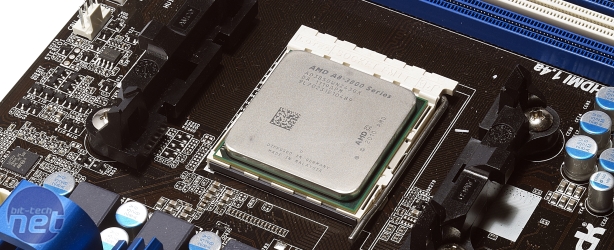
Results Analysis
It’s clear from the results that the Radeon HD 6550D inside the A8-3850 APU loves the extra bandwidth offered by a high-speed memory kit.In Left 4 Dead 2 at 1,280 x 720, we saw an 8fps jump in the minimum frame rate after switching from 1,333MHz memory to 1,600MHz memory. This was followed by an additional jump of 3fps when we set our test memory to run at its full rated speed of 1,833MHz. This increase was also mirrored in the average recorded frame rate, which saw an 11fps increase when switching from 1,333MHz DDR3 to 1,866MHz DDR3.
This upwards trend was continued at higher resolutions too, with higher speed memory providing a tangible benefit across all the resolutions at which we tested. At 1,920 x 1,080, the higher clocked memory actually moved Left 4 Dead 2 from a less-than-playable minimum frame rate of 24fps to a comfortably smooth 36fps.
It was a similar story in Call of Duty: Black Ops, which also saw increased frame rates at higher memory speeds. Interestingly, the benefits seemed to be greater at higher resolutions - switching from 1,333MHz to 1,866MHz RAM at 1,280 x 720 only netted us a 20 per cent increase in minimum frame rates, whereas making the same switch at 1,920 x 1,080 resulted in a 50 per cent boost in frame rates. This increase was still too small to make the game playable at 1,920 x 1,080, however.
Should you Pay More for a Lower Latency Kit?
In the past, and particularly with Intel's Sandy Bridge platform, the shine has been taken off high-speed memory kits to a degree. They've typically offered limited performance improvements for a sizeably increased price tag, with low-latency memory kits in particular commanding a high price.With the new line of Lynx APUs from AMD, however, memory speed has a tangible benefit on 3D performance, although latency settings still have little impact, at least in 3D performance. We re-tested Left 4 Dead 2 with 1,333MHz memory at 1,680 x 1,050, this time adjusting the CAS latency in the BIOS to see if there was a good reason to purchase a low-latency memory kit for a Llano based system.
While we did see a quantifiable benefit to running our test modules at a lower latency, the 1fps difference between our slowest test setting (CAS 9) and our quickest (CAS 7) is hardly worth shouting about. There's clearly some benefit but, given the price premium that's usually carried by low-latency modules, it’s unlikely that anyone building a low-cost Llano system will have the budget to splash out on super-posh RAM.
Conclusion
It’s great to actually see such a significant benefit from higher clocked memory. As ever, though, choosing a component comes down to assessing a blend of performance and price. Fortunately, the first choice to make when it comes to picking memory for your Llano system is easy - there's simply no point in buying 1,333MHz DDR3 when 1,600MHz kits can be had for as little as £5 more. You’ll see a distinct benefit in 3D applications when using a 1,600MHz kit.The choice of whether to opt for a 1,866MHz kit over a 1,600MHz kit is less clear-cut, though. There are few dual-channel 1,866MHz kits on the market at the moment, and those that are available retail for a premium too. As a result, it's almost certainly cheaper to opt for a budget 2,000MHz or 2,133MHz kit rather than search for one of the few 1,866MHz kits. These will still set you back around £50 though, which is around £15 more than the cost of a decent 1,600MHz kit.
Taking into account the kind of budget or HTPC systems into which AMD's Lynx APU is likely to make its way, we recommend 1,600MHz memory as the sweet spot. If you have an extra £15 in your budget, though (or if 1,833MHz kits drop in price to around £40-£45), you'll see a noticeable benefit from higher frequency memory when gaming.

MSI MPG Velox 100R Chassis Review
October 14 2021 | 15:04









Want to comment? Please log in.